Updated in August 2024 with additional links and photos
—–
Jollof rice: rice perfection that’s half way between the dryness of pilaf and the creaminess of risotto.
‘Traditionally’, Jollof rice is made with specific ingredients which define the perfect pot – from long-grain rice to scotch bonnet peppers and Maggi cubes for seasoning.
I present – the Jollof essentials.
Truth too is, essentials are no guarantee to success so one must understand a bit about the ‘perfect’ combinations.
Jollof Rice comes together in a few easy steps
- Prepare rice
- Make sauce
- Combine rice & sauce to cook
Long-grain, Parboiled Rice
‘Uncle Ben’s’ used to be synonymous with Long-grain rice in the eighties and early nineties (?) because it was readily available in Nigeria – I remember hearing My mum and aunties talk about ‘Uncle Ben’s’ like it was the holy grail of rice.

Compared with Basmati and Thai Jasmine, it rice has bite and the grains are thick enough to withstand the heat and sauce of cooking.
According to Wikipedia
Parboiled rice (also called converted rice) is rice that has been partially boiled in the husk. The three basic steps of parboiling are soaking, steaming and drying. These steps also make rice easier to process by hand, boost its nutritional profile and change its texture. About 50% of the world’s paddy production is parboiled.
The treatment is practiced in many parts of the world such as India, Bangladesh, Pakistan, Myanmar, Malaysia, Nepal, Sri Lanka, Guinea, South Africa, Italy, Spain, Nigeria, Thailand, Switzerland, USA and France.
The starches in parboiled rice become gelatinized, then retrograded after cooling. …Parboiled rice takes less time to cook and is firmer and less sticky.
Substitute: Common ones are basmati and Thai Jasmine. You could also use brown rice but it’ll take longer to cook.
Cook’s Tip: Boil the rice for (no longer) than 10 minutes before you combine with the stock/ tomato sauce. Like pasta, you don’t need to ‘rinse’ the starch out of the rice as you prep for Step 2
Fresh Plum Tomatoes
A lot of cooking in Nigeria is done with fresh ingredients and tomatoes are no exception. Various varieties from around the country are available throughout the year.
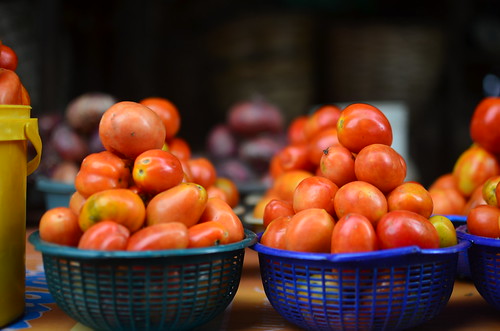
Very rarely would you find Nigerians, in Nigeria at least using canned tomatoes.
Substitute: Canned/ Tinned Plum tomatoes
Cook’s Tip: The tomato-onion ratio is key during blending. I tend to go for 4/5 plum tomatoes to 1 medium onion.
Red onions
There red/ purple onions are our go-to for most dishes.
Substitute: White Onions
Cook’s Tip: I like to add both blended and sliced onions
Fresh Scotch Bonnet Peppers
I particularly like the yellow variety for its sweet fragrance and peculiar taste, but the red ones are acceptable if not common for Jollof.
Scotch Bonnet pepper, named for its resemblance to a Tam o’ Shanter hat.
Most Scotch Bonnets have a heat rating of 100,000–350,000 Scoville Units.
These peppers are used to flavour many different dishes and cuisines worldwide and are often used in hot sauces and condiments. The Scotch bonnet has a sweeter flavour and stouter shape, distinct from its habanero cousin with which it is often confused.
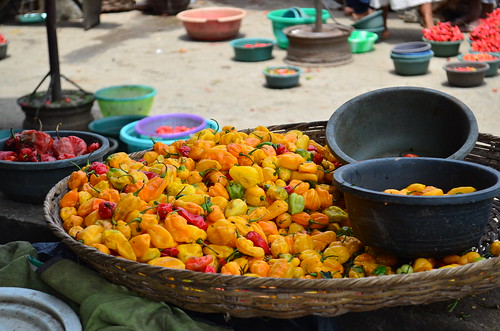
Substitute: Habanero pepper, any other fresh chilies you like
Cook’s Tip: Be careful when handling chilies. If you find them too hot – you can de–seed and use to taste. Sometimes, I split a chili pepper in half – not sliced or blended and let its flavour diffuse through the pot. It definitely lowers the strength and adds something different to the taste.
Tatashe
These are spicy Nigerian peppers , not quite red bell pepper, not quite chili pepper. They are known as Capsicum annuum, Fruited sweet pepper.
Because the seeds are quite bitter, only the skin is used.
Read more here: Nigerian Peppers
Substitute: (Roasted) red bell peppers.
Cook’s Tip: Use some in your Jollof! Tatashe adds to the ‘red-orange’ hue of the rice, complementing the tomato mixture.
Tomato Puree
I know a few people who only use the Derica brand. In fact growing up, that was the only brand of tomato puree we ever bought at home. Now we have ‘Tasty Tom’ and Gino and a few new ones.
Substitute: Some people might consider a paste of sundried tomatoes a good substitute…I’m not sure. Yet.
Cook’s Tip: I like to ‘fry’ my tomato puree in oil, before I make
Stock or Broth
Commonly, meat stock (from bones) or broth (from meat flesh) is used in Nigeria, made fresh from beef, chicken or both.
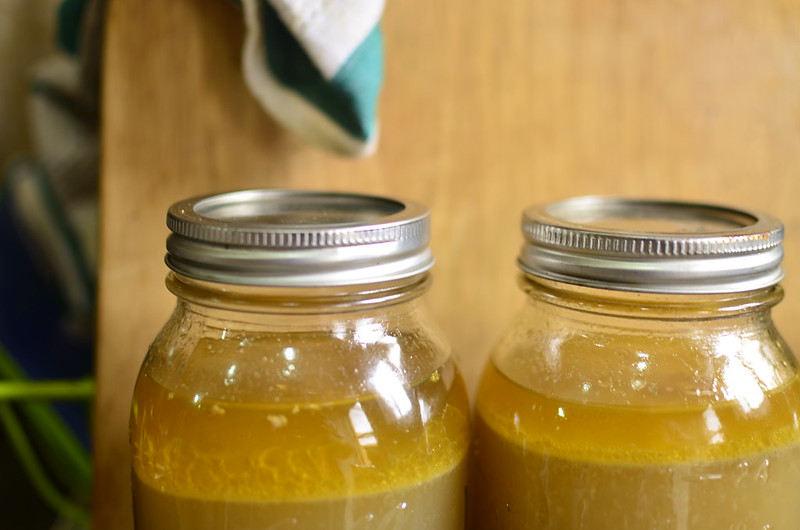
Read more here: How to make Nigerian curry stock
Substitute: Vegetable stock, to make it vegetarian/ vegan
Cook’s tip: My mother considers the tastiest stock to come from a freshly cooked mixture of beef and chicken.
Curry Powder
Essential in most Nigerian dishes, this blend of spices is warming and fragrant and similar to Caribbean not Indian blends of curry powder. I use one brand mostly – Lion. Which I grew up on. It is the brand I gift to family and friends at home and abroad 🙂
Substitute: You could use turmeric, along with some fresh blended ginger and garlic.
Cook’s Tip: Try the Lion brand if you haven’t – I promise there’ll be no going back.
Dried Thyme
Same old. Dried thyme. Essential seasoning in Nigerian cuisine 🙂
Substitute: Dried savory or even the Mediterranean oregano/ marjoram would fare better than fresh thyme,
Cook’s Tip: Don’t use fresh thyme.
Bay Leaves
I’ve never really been a big fan of dried bay leaves. But…for Jollof’s sake, I’ve began to use it. It’s okay. It lends an aniseed-type flavour to the dish that’s not overpowering so I’m cook. Not much else to say.
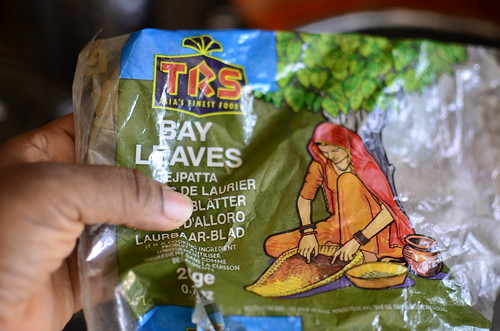 Substitute: A pinch of ground fennel seeds
Substitute: A pinch of ground fennel seeds
Cook’s Tip: Don’t overdo the bay leaves or substitute – what you want is to create a delicate accent on the flavour…not much else.
Stock cubes
In Nigeria, stock cubes are generally used as seasoning and not for making ‘stock’.
Substitute: Well, a rich stock should compensate for the stock cubes, now an essential part of Nigerian cuisine
Cook’s Tip: Go easy on the stock cubes – too much and you’ll end up with a deep salted flavour that ‘cuts’ rather than seasons.
—–00000—–
This brings me to the end of my Jollof Essentials.
What are those secret ingredients you put in your Jollof Rice that add ‘oomph’ to the pot?
Please share all. Thank you.

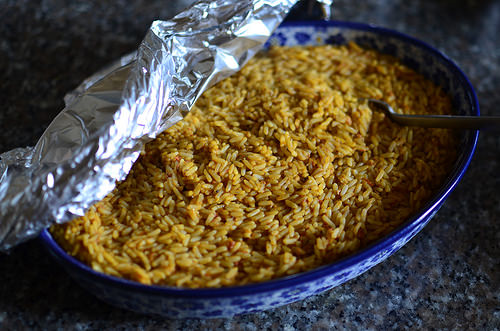
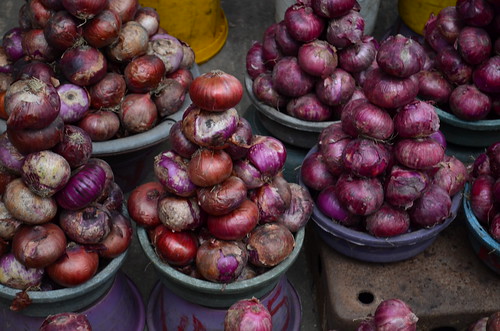
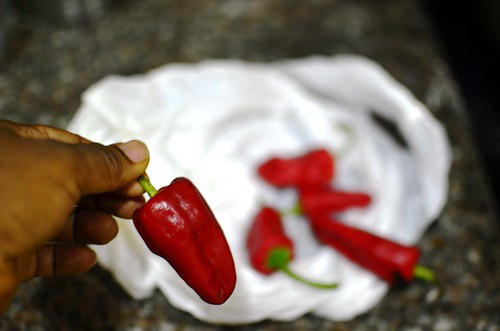
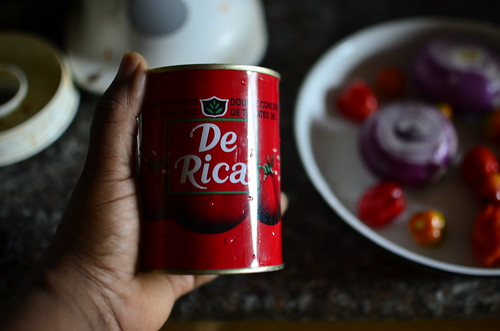
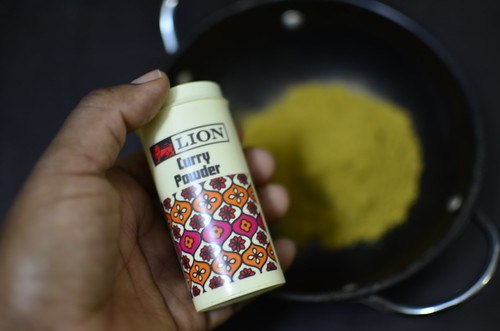
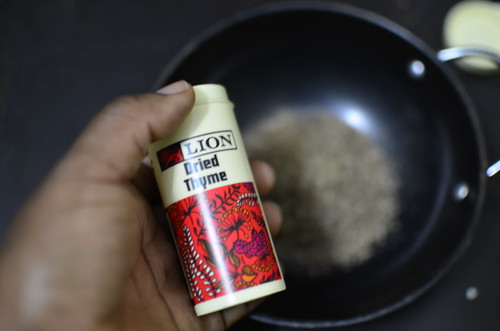
Leave a Reply